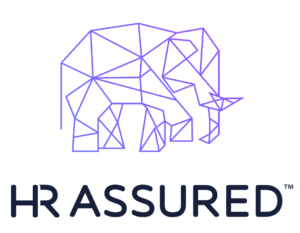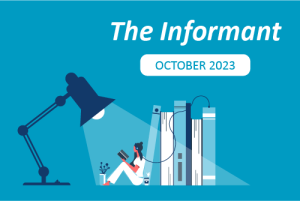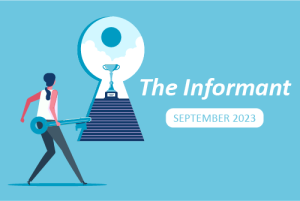JobKeeper 2.0 Amendment passes Federal Parliament
September 8, 2020On Tuesday 1 September 2020, the Coronavirus Economic Response Package (JobKeeper Payments) Amendment Bill 2020 (the Bill) passed the Federal Parliament. The Bill extends the JobKeeper payment scheme and the temporary JobKeeper provisions of the Fair Work Act (Cth) 2009 (FW Act), until 28 March 2021, in a revised form.
The Bill creates two broad categories of employers who can access particular flexibilities under the FW Act in certain circumstances from 28 September 2020:
i. Employers who are eligible for JobKeeper payments after 28 September 2020 (Qualifying Employers); and
ii. Employers who did receive one or more JobKeeper payments in the period prior to 28 September 2020, but no longer qualify for payment after 28 September 2020 (Legacy Employers).
Qualifying employers
To be eligible for JobKeeper 2.0, businesses will need to demonstrate that they have experienced the following decline in turnover:
• 30% or more (in the relevant quarter) for businesses with an aggregated turnover of less than $1 billion.
• 50% or more for (in the relevant quarter) for businesses with an aggregated turnover of more than $1 billion.
There will be two periods during which an employer will need to be able to prove that their turnover has declined by the relevant % in order to be eligible to continue to receiver JobKeeper:
1. From 28 September 2020, businesses will be required to reassess their eligibility with reference to their actual GST turnover in the 2020 September quarter (July, August and September) in order to be eligible for the JobKeeper payment from 28 September 2020 to 3 January 2021.
2. Then, from 4 January 2021, businesses will be required to further reassess their eligibility with reference to their actual GST turnover in the 2020 December quarter (October, November and December) to be eligible for the JobKeeper payment from 4 January 2021 to 28 March 2021.
The Bill extends the operation of the temporary JobKeeper provisions of the FW Act until 28 March 2021 for those employers who remain eligible for JobKeeper 2.0.
This means employers who qualify for JobKeeper 2.0 can continue to issue JobKeeper enabling directions to employees to work reduced hours or days, undertake alternative duties, or work at an alternative location or request an employee to work different days/times to their ordinary hours.
However, the flexibilities concerning annual leave will be repealed on 28 September 2020. These include the ability for an employer to request an employee take accrued annual leave and the ability for an employer to agree with employees for double annual leave to be taken at half pay.
There are no changes to the procedural requirements around issuing JobKeeper enabling directions. This includes notifying an employee before giving a JobKeeper direction, fulfilling consultation requirements and providing the direction in writing. That is, employers must give an employee at least three days written notice before issuing a JobKeeper direction, must consult with the employee (or their representative) about the direction and keep a written record of the consultation discussion.
Under JobKeeper 2.0, if directions relating to the reduction of hours are given, the directions may be unreasonable if it has an unfair effect on some employees in the same category when compared with other employees in that category who are also subject to those directions. Where a direction is unreasonable, it does not apply to an employee.
Eligible employees for JobKeeper 2.0
Employees who are eligible for JobKeeper 2.0 will fall into one of three categories:
1. Ongoing eligible employees:
• were employed on or before 1 March 2020;
• are currently employed by the employer;
• are a full-time, part-time or long-term casual employee;
• are at least 18 years of age on 1 March 2020;
• are 16 or 17 years of age on 1 March 2020 and are independent or not undertaking full-time study;
• are an Australian citizen or the holder of an applicable VISA;
• were an Australian resident for tax purposes on 1 March 2020; and
• are not in receipt of a JobKeeper payment from another employer.
2. Eligible re-employed former employees:
• the employee must have qualified for JobKeeper payments on 1 March 2020;
• the employee ceased employment with their employee between 1 March 2020 and 1 July 2020;
• the employee was re-employed by the same employer after 1 July 2020;
• the employee continues to satisfy the employee eligibility conditions that applied at 1 March 2020; and
• the employee has not at any point nominated for JobKeeper payments with a different employer (including during the period where they had ceased employment with the initial employer).
3. Eligible new employees that meet the 1 July 2020 test:
• were employed by the employer on or before 1 July 2020;
• are currently employed by an eligible employer;
• are a full-time, part-time or long-term casual employee;
• are at least 18 years of age on 1 March 2020;
• are 16 or 17 years of age on 1 March 2020 and are independent or not undertaking full-time study;
• are either an Australian citizen/holder of an applicable VISA OR an Australian resident for tax purposes as at 1 March 2020; and
• are not in receipt of a JobKeeper payment from another employer.
JobKeeper 2.0 payment rates
| Fortnightly cycle | JobKeeper 1.0 | JobKeeper 2.0 | |
| Employee average hours worked in 4 weeks before 1 March or 1 July 2020 | 30 March 2020 – 27 September 2020 | 28 September 2020 – 3 January 2021 | 4 January 2021 – 28 March 2021 |
| More than 20 hours | $1500 per fortnight | $1,200 per fortnight | $1,000 per fortnight |
| 20 hours or less | $750 per fortnight | $650 per fortnight | |
Legacy employers
Employers who qualified for JobKeeper 1.0 prior to 28 September 2020 who do not qualify for JobKeeper 2.0 but are still able to show at least a 10% decline in turnover, are able to access some modified FW Act flexibilities for their employees who previously received JobKeeper payments.
In order to prove the decline, businesses are required to:
• obtain a 10% decline in turnover certificate from a financial services provider; or
• if they choose to, self-certify where the employer is a small business with less than 15 employees (by headcount, excluding casuals who are not employed on a regular and systematic basis).
The 10% decline in turnover test requires that:
• between 28 September and 27 October 2020, a legacy employer must have a 10% decline in turnover certificate/self-certify for the June quarter (April, May and June) compared to June quarter 2019.
• between 28 October 2020 and 27 February 2021, a legacy employer must have a 10% decline in turnover certificate/self-certify for the September quarter (July, August, September) compared to September quarter 2019.
• between 28 February and 28 March 2021, a legacy employer must have a 10% decline in turnover certificate/self-certify for the December quarter (October, November, December) compared to December quarter 2019.
A legacy employer must obtain a 10% decline in turnover certificate/self-certify for each subsequent quarter in order to continue to be eligible to continue to use the FW Act flexibilities.
A direction/request automatically ceases to lawfully operate if an employer does not obtain the relevant certificate each quarter.
The following financial service providers can issue a certificate:
• a registered tax agent, BAS agent; or
• a qualified accountant.
This excludes financial service providers who are directors, employees or an associated entity
Employers must also notify employees before the next eligibility period if the JobKeeper directions currently in place will either:
• continue to apply as a result of the employer obtaining a turnover certificate; or
• cease to apply as a result of the employer not obtaining a turnover certificate
Disputes can be brought before the Fair Work Commission (FWC) about whether an employer holds a 10% decline in turnover certificate for a relevant period, or whether the certificate was issued by an eligible financial service provider, but the FWC cannot otherwise consider the 10% decline in turnover test.
The following workplace flexibilities apply to legacy employers:
A. Direction: to work reduced hours or days:
The ability to direct employees to work reduced hours or days for legacy employees is not the same as applied under JobKeeper 1.0.
Legacy employers can give a direction to an employee to:
• work a reduced number of hours or days to a minimum of 60% of an employee’s ordinary hours of work (as at 1 March 2020); BUT
• cannot result in an employee working less than two consecutive hours in a day that they work (minimum engagement requirement).
These directions can be given so long as the employee cannot be usefully employed for their normal days or hours because of changes to the business attributable to COVID 19 or government initiatives to reduce COVID-19 transmission.
In assessing an employee’s “ordinary hours as at 1 March 2020,” employers must determine not the hours the employee did or did not work on 1 March 2020, but rather their contracted hours pursuant to their employment contract.
B. Direction: to change location of work:
The requirements for a legacy employer to give a direction to an employee to perform duties at a place different to their normal workplace remain unchanged as per JobKeeper 1.0.
C. Direction: to change usual duties:
The requirements for a legacy employer to give a direction to an employee to perform different duties compared to their usual work duties remain unchanged as per JobKeeper 1.0.
D. Request: to work different days/times of work:
The ability to request employees to work different hours or days for legacy employers is not the same as applied under JobKeeper 1.0.
A legacy employer can request an employee to perform their duties on different days/times provided that:
• the performance of those duties on those days is safe;
• the performance of those duties on those days is reasonably within the scope employer’s business operations;
• the agreement does not have the effect of reducing the employee’s number of hours of work compared to the employee’s ordinary hours of work; and
• the agreement does not have the effect of requiring the employee to work less than two consecutive hours in a day that they do work (minimum engagement requirement).
E. Request: annual leave
Legacy employers cannot direct employees to take annual leave. Any requests to take annual leave made by an employer under JobKeeper 1.0 that extend beyond the end of JobKeeper 1.0 (27 September 2020) cease to have an effect on 28 September 2020.
Other annual leave arrangements that an employer and employee have in place can continue unaffected.
Consultation requirements
Legacy employers have slightly different notification and consultation obligations compared to qualifying employers.
Legacy employers must give employees seven days written notice before issuing a direction and the consultation requirements have been expanded to largely mimic the model consultation term in 2.09 of the Fair Work Regulations. That is, legacy employers must:
• provide the employee or their representative with information about the proposed direction; and
• invite the employee or their representative to give their views and feedback about the impact of the proposed direction.
A written record of the consultation must be kept by the employer.
It is important to note that if an employee gives views about a proposed direction and the employer in considering those views modifies the proposed direction, the employer does not have to repeat the notice and consultation requirements to give the modified direction.
For more information about JobKeeper 2.0 and what it means for your business contact the team at FCB Group.

























